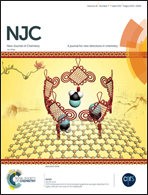New quantitative methods of electrode evaluation under continuous voltammetric conditions
Abstract
Based on the recent results obtained in papers it has become possible to create an original theory for the quantitative detection/description of different electrode states in electrochemical measurements. This new approach allows for the taking into account of the influence of the apparatus function and for the quantitative comparison of two similar electrodes used for measurements of the same substance. The new approach does need unjustified suppositions and a specific model for the description of measured curves; the desired curves (reduced to an ideal experiment after the elimination of the apparatus function) are expressed quantitatively in terms of the so-called intermediate model. The fitting parameters of the intermediate model coincide with the fragment of the Fourier series used as the fitting function. Besides, the distribution of measurements has a universal distribution and can be expressed in terms of the fitting parameters associated with a beta distribution function. The new approach opens new perspectives for conventional electrochemistry and can be used as an accurate tool for the description of reproducible data, the detection of “traces” and the selection of the “best fit” model among competitive hypotheses suggested by theoretical electrochemistry.



 Please wait while we load your content...
Please wait while we load your content...